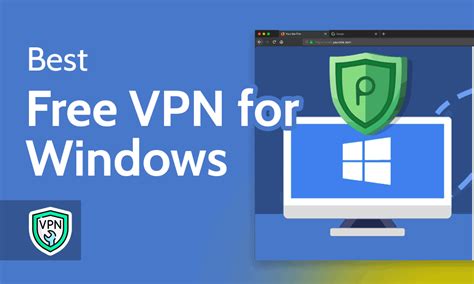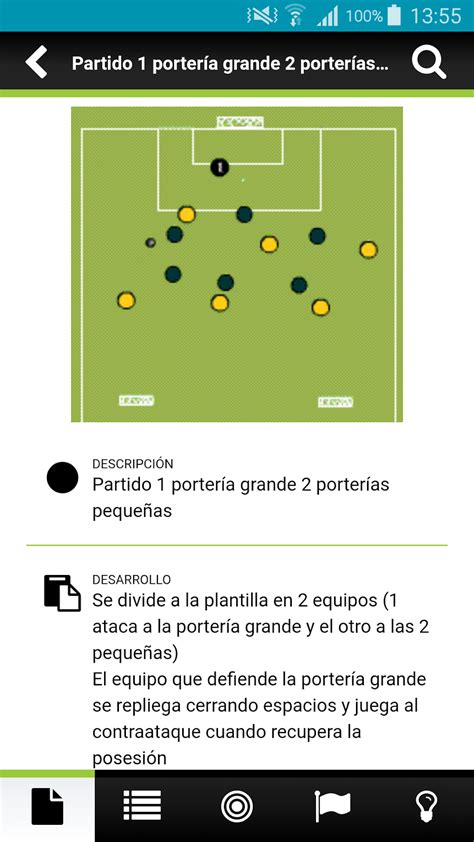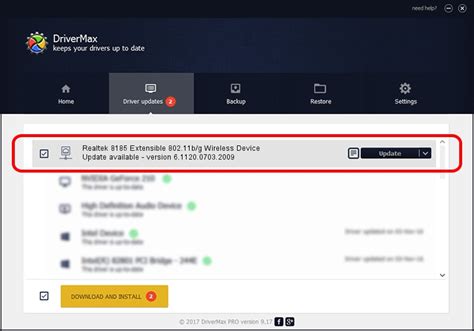Environment
Author: m | 2025-04-23

ENVIRONMENT - SPEAKING - VOCABULARY ENVIRONMENT - ENVIRONMENT TEXT - Plastic Voyages Quiz - Desert Environment - Environment - MORE ENVIRONMENT ENVIRONMENT - SPEAKING - VOCABULARY ENVIRONMENT - ENVIRONMENT TEXT - Plastic Voyages Quiz - Desert Environment - Environment - MORE ENVIRONMENT VOCABULARY

Designed Environments, Design Environments, Designed Environment, d
And maintain. FAQ What is Java SE Runtime Environment? Java SE Runtime Environment is a software package that allows users to run Java applications on their computers. Do I need Java SE Runtime Environment? If you want to run Java applications on your computer, you will need to download and install Java SE Runtime Environment. Is Java SE Runtime Environment free? Yes, Java SE Runtime Environment is free to download and use. What is the latest version of Java SE Runtime Environment? The latest version of Java SE Runtime Environment is version 8. Can I install multiple versions of Java SE Runtime Environment on my computer? Yes, it is possible to install multiple versions of Java SE Runtime Environment on your computer. How do I update Java SE Runtime Environment? You can update Java SE Runtime Environment by downloading and installing the latest version from the Oracle website. Is Java SE Runtime Environment secure? Java SE Runtime Environment has a history of security vulnerabilities, but Oracle regularly releases updates to address these vulnerabilities. Can I uninstall Java SE Runtime Environment? Yes, you can uninstall Java SE Runtime Environment like any other application on your computer. What are some alternative software packages to Java SE Runtime Environment for running Java applications? Some alternative software packages for running Java applications include OpenJDK, IBM JDK, and Azul Systems Zulu JDK. Is Java SE Runtime Environment the same as Java Development Kit (JDK)? No, Java SE Runtime Environment is used for running Java applications, while Java Development Kit includes additional tools for developing Java applications.
Understanding Julia Environments - Project Environment and
Of any updated variables. These statuses indicate that the environment is being updated with the configuration. After completion, the updated environment variable is visible in the table. Delete an environment variable delete-env-variable Use of environment variables using Environment variables can make your pom.xml configurations more secure and flexible. For example, passwords needn’t be hard coded and your configuration can adapt based on the values in environment variables. You can access environment variables and secrets by way of XML as follows: ${env.VARIABLE_NAME} See Setting Up Project for an example of how to use both types of variables in a pom.xml file. See also the official Maven documentation for more details. Availability of environment variables availability Environment variables can be used in several places as follows: Where environment variables can be used Description Author, Preview, and Publish Both regular environment variables and secrets can be used in the authoring, preview, and publishing environments. Dispatcher Only regular environment variables can be used with the Dispatcher. Secrets cannot be used. Environment variables cannot be used in IfDefine directives. Validate your use of environment variables with the Dispatcher locally before deploying. OSGi configurations Both regular environment variables and secrets can be used in OSGi Configurations. Pipeline Variables In addition to environment variables, there are also pipeline variables, which are exposed during the build phase. Learn more about pipeline variables in Build Environment. fbcff2a9-b6fe-4574-b04a-21e75df764abA meta-environment for generating programming environments
Workspace. Collections, APIs, and mock servers that use the environment can be moved manually or reconfigured.Export an environmentAnother way to move an environment is to export it from one workspace and import it into a different workspace.Select Environments in the sidebar and select an environment.Select the more actions icon and select Export.Select Save to download the generated JSON file.You can import the JSON file into another workspace by dragging it into Postman. Learn more about data import and export.After you move an environment, you can share it with others and add them as collaborators.Select Environments in the sidebar and select an environment.Select the share icon .Enter the names, group names, or email addresses you want to share the environment with.If you have the Editor role for the environment, select the role you want your collaborators to have (Viewer or Editor).Select Share.Postman will notify the people you shared the element with about your request to collaborate. Learn more about sharing your work in Postman.To copy a link to the environment you can share with others, select the link icon next to the environment's name.Manage environment rolesYour role determines the actions you can take with an environment. You can have the Editor or Viewer role for an environment.You must be an Editor on an environment or a Workspace Admin to assign environment roles. Learn more about environment roles.Use an environment with the Viewer roleIf you have the Viewer role for an environment, you can access the values of all variables in the. ENVIRONMENT - SPEAKING - VOCABULARY ENVIRONMENT - ENVIRONMENT TEXT - Plastic Voyages Quiz - Desert Environment - Environment - MORE ENVIRONMENTRapid Environment Editor: Environment Variables
The support data region where you want the environment to be created.Set Add a Dataverse data store? to Yes.Select Next.NoteThe environment must be created in a supported region. Learn more about data locations.Specify the details of the Dataverse data store, such as the language, currency type, and security group and then select Save. This operation takes you back to the Environments tab.Select Refresh to see the new environment. It might take a few minutes before the environment becomes available.After the environment is created, you can return to Copilot Studio and use the environment to create a new agent.Create an agent in an existing environmentSelect the environment in the environment switcher on the top menu bar.Create an agent in an existing environment where you don't have accessTo create an agent in an environment, you need access to the environment. If you don't have access, you need to be a system administrator or contact the system administrator to grant access. You then need to complete the following steps:Create an agent in the environment (this step installs the necessary Copilot Studio solutions).Assign the security role of "agent author" to yourself in the environment.Return to Copilot Studio and create an agent in the environment.Trial environmentsWhen you trial Copilot Studio, you can create trial environments that expire after 30 days. When the environment expires, all the agents in the environment are deleted. This causes all the data associated with the agent, including any flows and resources you have been using, to be lost.If you created your own environment and selected Trial as the environment type, you receive email messages shortly before the environment expires. In Copilot Studio, you also see a notification if you have agents created in a trial environment that is going to expire in less than two weeks.Converting a trial environment to a production environmentWhen using a trial environment and you want to retain the agents for longer than 30 days, you must convert the trial environment to a production environment.Supported operationsCopilot Studio supports the following environment lifecycle operations, as described in Power Platform environments overview:Back up and restoreDeleteRecoverCopyResetThe following operation isEnvironment Variables - Rapid Environment Editor
And code samples with examples of how to use and connect Google Cloud services. Training Training and tutorials Build a Python 3 app in the App Engine standard environment Learn the basics of developing, and deploying Python 3 web services in the App Engine standard environment. Training Training and tutorials Create a Java app in the App Engine flexible environment Learn how to create and deploy an app that displays a short message in the App Engine flexible environment. Training Training and tutorials Write and respond to Pub/Submessages Understand how to use Cloud Client Libraries to send and receive Pub/Sub messages in the App Engine standard environment. Training Training and tutorials Use Firestore in Datastore mode (Datastore) Store and retrieve data in a Datastore database using Cloud Client Libraries in the flexible environment. Training Training and tutorials Use Cloud Storage with App Engine Store and retrieve data in Cloud Storage using Cloud Client Libraries in the standard environment. Training Training and tutorials App Engine migration Modernize your app to use the latest technologies Code Samples Code Samples Go sample apps Includes Go samples for the App Engine standard environment and the flexible environment. Code Samples Code Samples Java sample apps Includes Java samples for the App Engine standard environment and the flexible environment. Code Samples Code Samples Node.js sample apps Includes Node.js samples for the App Engine standard environment and the flexible environment. Code Samples Code Samples PHP sample apps Includes PHP samples for the App Engine standard environment and the flexible environment. Code Samples Code Samples Python sample apps Includes Python samples for the App Engine standard environment and the App Engine flexible environment. Code Samples Code Samples Ruby sample apps Includes Ruby samples for the App Engine standard environment and the App Engine flexible environment. Code Samples Code Samples .NET sample apps Includes .NET samples for the App Engine flexible environment. Except as otherwise noted, the content of this page is licensed under the Creative Commons Attribution 4.0 License, and code samples are licensed under the Apache 2.0 License. For details, see the Google Developers Site Policies. JavaRapid Environment Editor Rapid Environment
>> macOS Android iPhone Web Apps Windows macOS Android iPhone Web Apps Windows ڈویلپر ٹولز جاوا سافٹ ویئر Java Runtime Environment (32bit) پرانی ورژنز Java Runtime Environment (32bit) 8 Update 321 Jan 19, 202271.59 MB ڈاؤن لوڈ کریں Java Runtime Environment (32bit) 8 Update 311 Oct 21, 202171.22 MB ڈاؤن لوڈ کریں Java Runtime Environment (32bit) 8 Update 301 Jul 22, 202170.72 MB ڈاؤن لوڈ کریں Java Runtime Environment (32bit) 8 Update 291 Apr 22, 202170.30 MB ڈاؤن لوڈ کریں Java Runtime Environment (32bit) 8 Update 281 Jan 20, 202169.74 MB ڈاؤن لوڈ کریں Java Runtime Environment (32bit) 8 Update 271 Oct 21, 202069.53 MB ڈاؤن لوڈ کریں Java Runtime Environment (32bit) 8 Update 261 Jul 15, 202069.61 MB ڈاؤن لوڈ کریں Java Runtime Environment (32bit) 8 Update 251 Apr 15, 202065.52 MB ڈاؤن لوڈ کریں Java Runtime Environment (32bit) 8 Update 241 Jan 14, 202065.31 MB ڈاؤن لوڈ کریں Java Runtime Environment (32bit) 8 Update 231 Oct 17, 201964.93 MB ڈاؤن لوڈ کریں Glary Utilites اپنی کمپیوٹر کو تیز کریں۔ بالکل مفت کوئی بنڈل نہیں، کوئی اشتہار نہیں، کوئی وائرس نہیں۔ اب ڈاؤن لوڈ کریں. ENVIRONMENT - SPEAKING - VOCABULARY ENVIRONMENT - ENVIRONMENT TEXT - Plastic Voyages Quiz - Desert Environment - Environment - MORE ENVIRONMENT ENVIRONMENT - SPEAKING - VOCABULARY ENVIRONMENT - ENVIRONMENT TEXT - Plastic Voyages Quiz - Desert Environment - Environment - MORE ENVIRONMENT VOCABULARYComments
And maintain. FAQ What is Java SE Runtime Environment? Java SE Runtime Environment is a software package that allows users to run Java applications on their computers. Do I need Java SE Runtime Environment? If you want to run Java applications on your computer, you will need to download and install Java SE Runtime Environment. Is Java SE Runtime Environment free? Yes, Java SE Runtime Environment is free to download and use. What is the latest version of Java SE Runtime Environment? The latest version of Java SE Runtime Environment is version 8. Can I install multiple versions of Java SE Runtime Environment on my computer? Yes, it is possible to install multiple versions of Java SE Runtime Environment on your computer. How do I update Java SE Runtime Environment? You can update Java SE Runtime Environment by downloading and installing the latest version from the Oracle website. Is Java SE Runtime Environment secure? Java SE Runtime Environment has a history of security vulnerabilities, but Oracle regularly releases updates to address these vulnerabilities. Can I uninstall Java SE Runtime Environment? Yes, you can uninstall Java SE Runtime Environment like any other application on your computer. What are some alternative software packages to Java SE Runtime Environment for running Java applications? Some alternative software packages for running Java applications include OpenJDK, IBM JDK, and Azul Systems Zulu JDK. Is Java SE Runtime Environment the same as Java Development Kit (JDK)? No, Java SE Runtime Environment is used for running Java applications, while Java Development Kit includes additional tools for developing Java applications.
2025-04-03Of any updated variables. These statuses indicate that the environment is being updated with the configuration. After completion, the updated environment variable is visible in the table. Delete an environment variable delete-env-variable Use of environment variables using Environment variables can make your pom.xml configurations more secure and flexible. For example, passwords needn’t be hard coded and your configuration can adapt based on the values in environment variables. You can access environment variables and secrets by way of XML as follows: ${env.VARIABLE_NAME} See Setting Up Project for an example of how to use both types of variables in a pom.xml file. See also the official Maven documentation for more details. Availability of environment variables availability Environment variables can be used in several places as follows: Where environment variables can be used Description Author, Preview, and Publish Both regular environment variables and secrets can be used in the authoring, preview, and publishing environments. Dispatcher Only regular environment variables can be used with the Dispatcher. Secrets cannot be used. Environment variables cannot be used in IfDefine directives. Validate your use of environment variables with the Dispatcher locally before deploying. OSGi configurations Both regular environment variables and secrets can be used in OSGi Configurations. Pipeline Variables In addition to environment variables, there are also pipeline variables, which are exposed during the build phase. Learn more about pipeline variables in Build Environment. fbcff2a9-b6fe-4574-b04a-21e75df764ab
2025-04-03The support data region where you want the environment to be created.Set Add a Dataverse data store? to Yes.Select Next.NoteThe environment must be created in a supported region. Learn more about data locations.Specify the details of the Dataverse data store, such as the language, currency type, and security group and then select Save. This operation takes you back to the Environments tab.Select Refresh to see the new environment. It might take a few minutes before the environment becomes available.After the environment is created, you can return to Copilot Studio and use the environment to create a new agent.Create an agent in an existing environmentSelect the environment in the environment switcher on the top menu bar.Create an agent in an existing environment where you don't have accessTo create an agent in an environment, you need access to the environment. If you don't have access, you need to be a system administrator or contact the system administrator to grant access. You then need to complete the following steps:Create an agent in the environment (this step installs the necessary Copilot Studio solutions).Assign the security role of "agent author" to yourself in the environment.Return to Copilot Studio and create an agent in the environment.Trial environmentsWhen you trial Copilot Studio, you can create trial environments that expire after 30 days. When the environment expires, all the agents in the environment are deleted. This causes all the data associated with the agent, including any flows and resources you have been using, to be lost.If you created your own environment and selected Trial as the environment type, you receive email messages shortly before the environment expires. In Copilot Studio, you also see a notification if you have agents created in a trial environment that is going to expire in less than two weeks.Converting a trial environment to a production environmentWhen using a trial environment and you want to retain the agents for longer than 30 days, you must convert the trial environment to a production environment.Supported operationsCopilot Studio supports the following environment lifecycle operations, as described in Power Platform environments overview:Back up and restoreDeleteRecoverCopyResetThe following operation is
2025-04-05And code samples with examples of how to use and connect Google Cloud services. Training Training and tutorials Build a Python 3 app in the App Engine standard environment Learn the basics of developing, and deploying Python 3 web services in the App Engine standard environment. Training Training and tutorials Create a Java app in the App Engine flexible environment Learn how to create and deploy an app that displays a short message in the App Engine flexible environment. Training Training and tutorials Write and respond to Pub/Submessages Understand how to use Cloud Client Libraries to send and receive Pub/Sub messages in the App Engine standard environment. Training Training and tutorials Use Firestore in Datastore mode (Datastore) Store and retrieve data in a Datastore database using Cloud Client Libraries in the flexible environment. Training Training and tutorials Use Cloud Storage with App Engine Store and retrieve data in Cloud Storage using Cloud Client Libraries in the standard environment. Training Training and tutorials App Engine migration Modernize your app to use the latest technologies Code Samples Code Samples Go sample apps Includes Go samples for the App Engine standard environment and the flexible environment. Code Samples Code Samples Java sample apps Includes Java samples for the App Engine standard environment and the flexible environment. Code Samples Code Samples Node.js sample apps Includes Node.js samples for the App Engine standard environment and the flexible environment. Code Samples Code Samples PHP sample apps Includes PHP samples for the App Engine standard environment and the flexible environment. Code Samples Code Samples Python sample apps Includes Python samples for the App Engine standard environment and the App Engine flexible environment. Code Samples Code Samples Ruby sample apps Includes Ruby samples for the App Engine standard environment and the App Engine flexible environment. Code Samples Code Samples .NET sample apps Includes .NET samples for the App Engine flexible environment. Except as otherwise noted, the content of this page is licensed under the Creative Commons Attribution 4.0 License, and code samples are licensed under the Apache 2.0 License. For details, see the Google Developers Site Policies. Java
2025-04-08